Need inspiration as you plan a beautiful home garden? Check out this list, evaluated by our garden design expert.
Our editors and experts handpick every product we feature. We may earn a commission from your purchases.Learn more.
Need inspiration as you plan a beautiful home garden? Check out this list, evaluated by our garden design expert.
Our editors and experts handpick every product we feature. We may earn a commission from your purchases.Learn more.
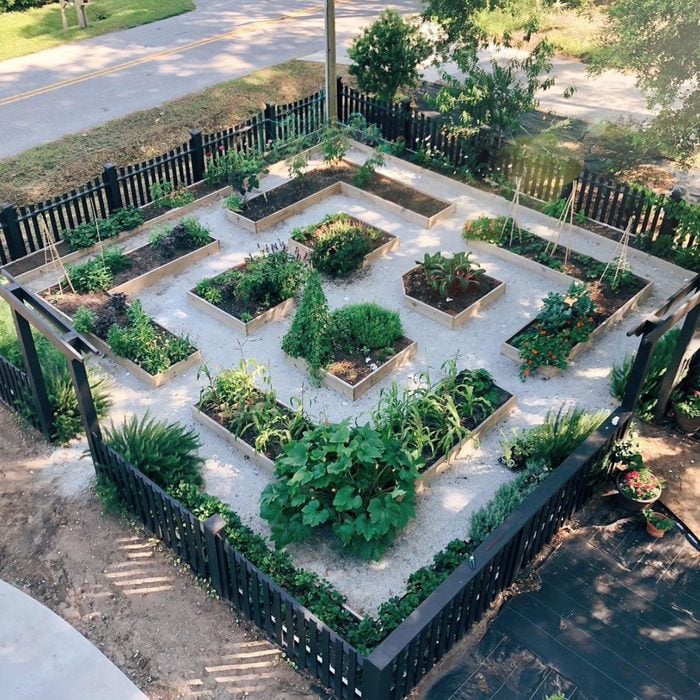
The bird’s eye view of this garden from @kristen.growing shows off many smart design choices. The wide paths, geometric garden boxes and symmetry were planned out carefully.
Colvin says she visualized different configurations and sketched them on graph paper, going through about “15 bajillion designs” before picking the winner! — Erica Young.
What I like about it: This classical herb garden layout can be formal or more casual depending on the building materials, accessories and planting style you choose. It’s easy to access from all directions, and the beds aren’t too deep to reach the corners.
Vining or sprawling plants are in the back on trellises and edges, so they have room to grow and don’t shade other plants. — EBG.

Don’t let a small outdoor space stop you from growing your dream garden. Even a tiny balcony has plenty of room for a garden with savvy planning, as seen in this example from @designablehome.
The garden boxes are set up along the perimeter, leaving just enough walking space. They also optimized the vertical space by hanging plants from the ceiling as well as the window sill, balcony railing and walls. — EY.
What I like about it: Every inch is used here, from the window ledge to the balcony railing! The U-shape design means you can access all the plants. I’m also a fan of the formal metal trellises, which can be used for years and add a touch of elegance to this garden. — EBG.

When @wild_flowear designed her garden, she wanted it to feel free and playful. So instead of a formal, symmetrical layout, she placed her garden beds and boxes organically throughout the yard.
Rock borders and clear gravel paths keep it from looking messy. The beautiful birch-post trellis in the largest garden box provides a place to grow climbing plants like peas, green beans and cucumbers.
Also, if you’re looking for a trouble-free landscaping option, a gravel garden might be in your future. If laid correctly with at least four inches of gravel, they’re a lot less hassle than lawns and standard landscaping beds because they need minimal weeding or irrigation. — EY.
What I like about it: A clear vision, beautifully executed. I love how the design style of the deck carries through to the fun beehive-like raised beds that allow distinct, reachable planting areas.
Those chunky birch trellises fit the mod aesthetic perfectly too; thin bamboo stakes or wrought iron wouldn’t fit in here. From this angle, design elements lead the eye through the space and invite you in, from the decorative lantern to the birch poles and arbor seating area. — EBG.
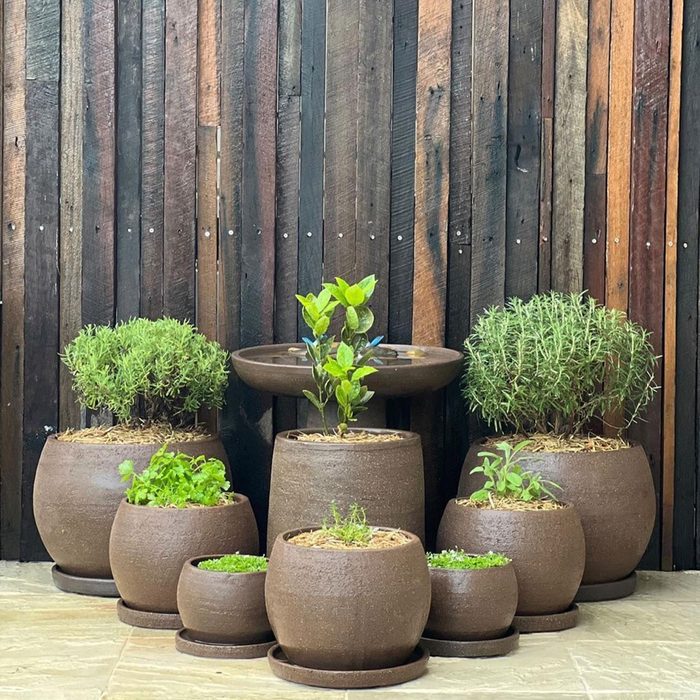
Of course, not all designs fit the mold of a traditional garden. This potted garden by @modern_outdoor_design features a triangular arrangement of matching pottery, each filled with different herbs. Notice the bird bath peaking out in the back!
Combined with the backdrop of the recycled wood feature wall, the overall effect of this modern garden is stunning. — EY.
What I like about it: You might be surprised how many edible plants can grow happily in pots — just make sure to give plants the size pot they need.
Lettuce and strawberries can grow in only four inches, while tomatoes prefer a container at least 15 inches deep. Perennial plants need large enough pots to prevent their roots from freezing and may need other protection.
Matching ceramic pottery elevates this design. The birdbath in the back enlivens the space by inviting and nourishing local birds, which adds life and habitat to your garden! — EBG.
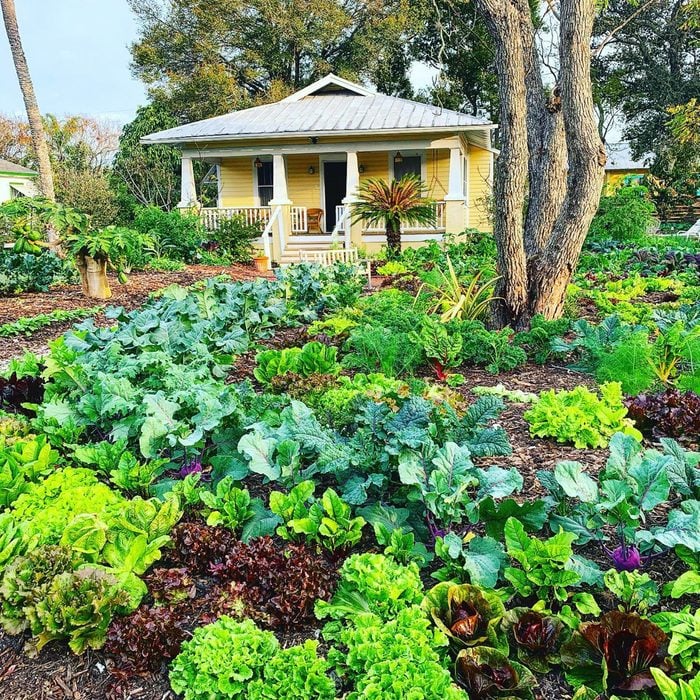
When picturing a home vegetable garden, you probably automatically imagine it in the backyard. But as proven here by @greendreamstv, a front yard garden can be possible and beautiful.
This one is packed with lettuce variants and other vegetables in varying colors and textures. The lush layout adds more curb appeal than green grass ever could! — EY.
What I like about it: This is a wonderful example of making your front yard work for you, beautifully.
The waves of color and blocks of repeated plants are striking and the plants are spaced closely, lending a lush appearance. Note that between the plants, mulched soil keeps the plants’ roots moist when it’s hot and dry. — EBG.
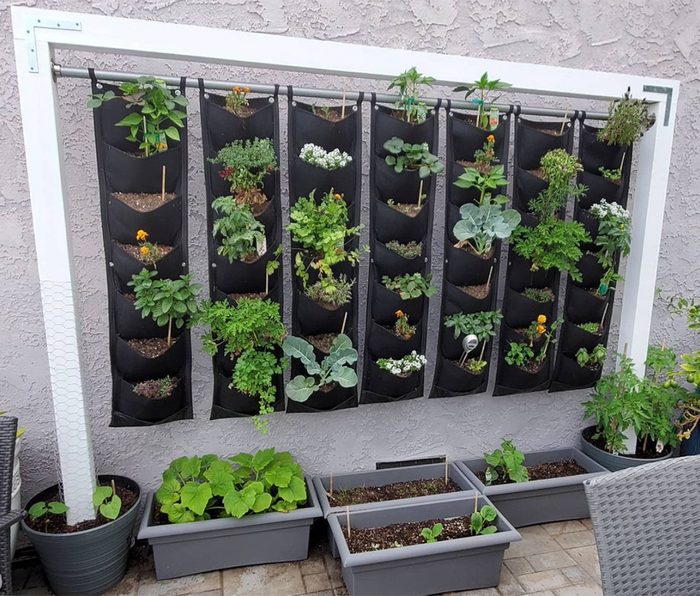
No space in the ground? No problem. Plant a vertical garden!
@melaniecollup built this freestanding wood structure to hang fabric pocket planters. Fabric planters are breathable, allowing oxygen reach the roots, which encourages healthy growth. Concrete was poured into large circular pots to anchor the wood posts, then topped with soil for plants with short roots. Check out these other inspirational vertical gardens. — EY.
What I like about it: Vertical elements like trellises, plantable panels, palette gardens or gutter troughs make the most of your garden space and pump up the visual interest.
It’s important to match the plant’s needs to your design. Some vining plants need extra support, others need tying in, and some plants have more shallow roots than others. Note shallow gardens like these may dry out quickly and need watering daily during high temperatures or winds. — EBG.
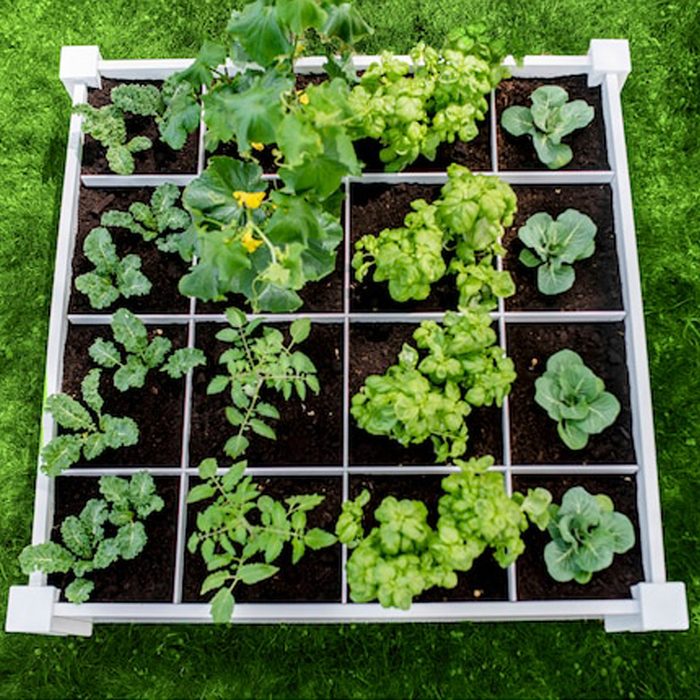
Square-foot gardening is a layout technique that lets you utilize every square inch of soil.
Here’s how it works: Divide your garden box into square-foot sections, marking the squares with string, boards or another material. Plant a specific crop within each of the 12-inch squares rather than in rows. This GroGrid gardening box does all the measuring and marking for you with its built-in grid. — EY.
What I like about it: “Square-foot-gardening” is a space-efficient system that requires trellising and pruning for bigger crops.
In this case, I would move trellised indeterminate (vining) tomatoes to an outer corner and keep them pruned to avoid them sprawling on the other plants. Determinate (bush) tomatoes should not be pruned, but in square-foot gardening its recommended to allot them two boxes. — EBG.
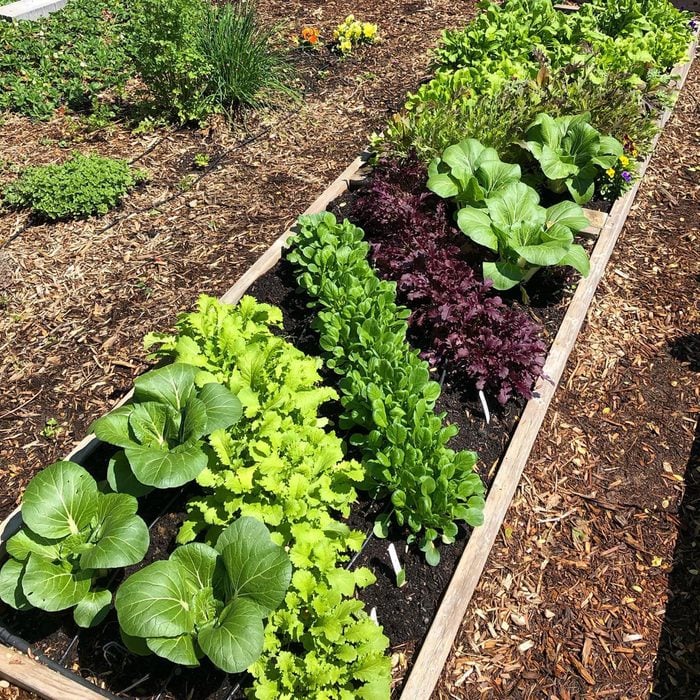
Who says vegetable rows have to be parallel lines? Play with pattern and design your garden with diagonal rows, as seen here in this garden box planted by @loveandcarrots.
Make sure neighboring plants are different colors, textures and leaf sizes to achieve the high-contrast effect seen here. And be sure to leave 12 inches of space between rows so your greens aren’t overcrowded. — EY.
What I like about it: The diagonal planting creates an unexpected dynamism and sense of movement in this garden, which can lead the eye. It makes the often simple veggie garden a decorative element in its own right. Using several planters, you can create all kinds of designs. — EBG.
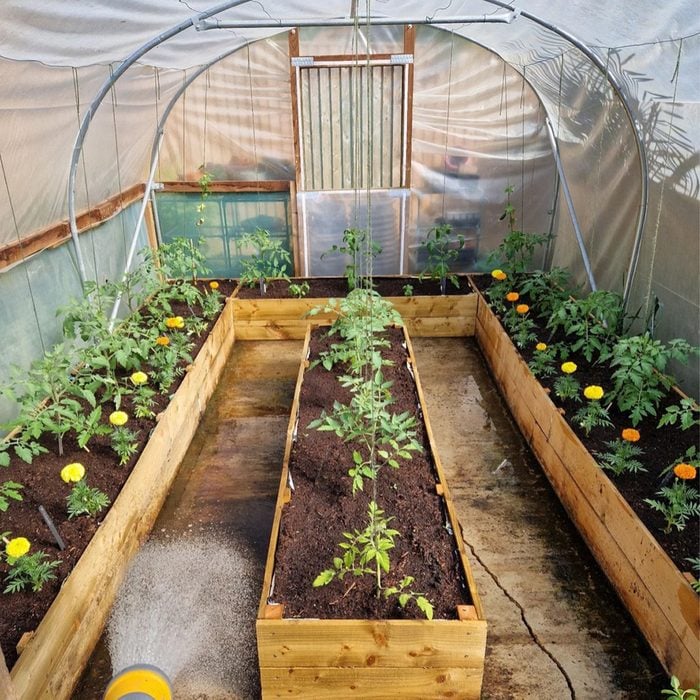
A polytunnel is essentially a semi-circular greenhouse with a steel frame covered by a sheet of polythene, a much more affordable option than glass. Consider a polytunnel in your garden design to extend your growing season into the colder months.
In this setup by @cotswoldpotager, her tomato plants are flourishing. Notice the marigolds that act as companion plants to the tomatoes; their strong smell deters white flies and aphids. — EY.
What I like about it: You don’t need to build a greenhouse to grow in cooler climates. Polytunnels, frost cloth and hoop houses are great season-extenders that are easy to build and adapt to your conditions.
This one is tall enough to walk through and would accommodate full-grown tomatoes, if needed. You might need to keep the “doors” open on sunny days to permit air circulation and moderate temperatures. — EBG.
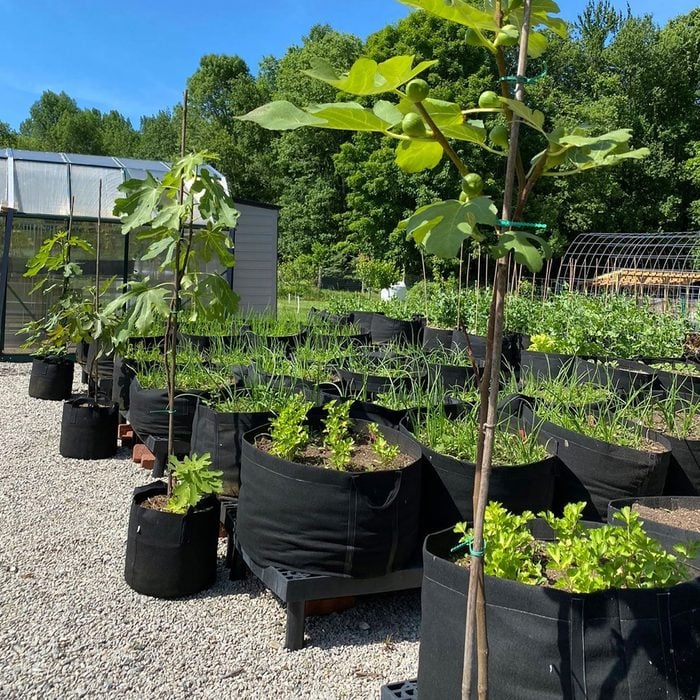
Incorporating grow bags into your garden design can have many benefits. According to the gardening experts at @our.garden.gig, grow bags encourage superior root growth thanks to air pruning. That’s the process where air circulation in the bag naturally prunes the roots.
Plus, grow bags are inexpensive and don’t require any tilling — just add free compost to the top every planting season. They’re also portable and help regulate soil temperatures. — EY.
What I like about it: Grow bags are fun, lightweight and reusable alternatives to plastic pots. They don’t last as long as plastic, but they do have great drainage, and can be cleaned and folded away for next season.
I’ve had good luck overwintering some moisture-sensitive plants like dahlias in these on our patio in Seattle, Washington. Look for nice strong handles because they get heavy when full. — EBG.
Erica Browne Grivas studied landscape design and horticulture at The New York Botanical Garden, then worked at urban nurseries in New York City and Seattle for more than eight years. She’s also on the boards of several horticultural organizations.